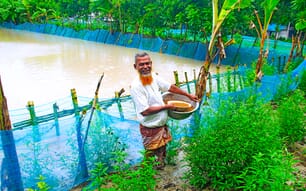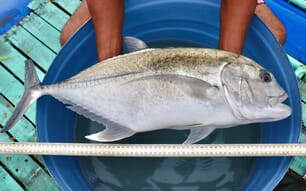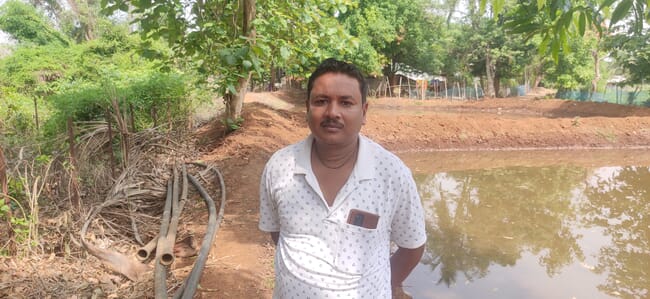
After excavating ponds on his land, he failed in his first seven attempt to breed the fish. However, he refused to give up and recovered his investment costs within a year.
What were you doing before you started farming catfish?
I was a vehicle mechanic.
What size is your farm and what species do you produce?
It’s around 3 acres and I have 14 ponds stocked with Asian catfish (Clarias batrachus), which are locally known as Desi magur.
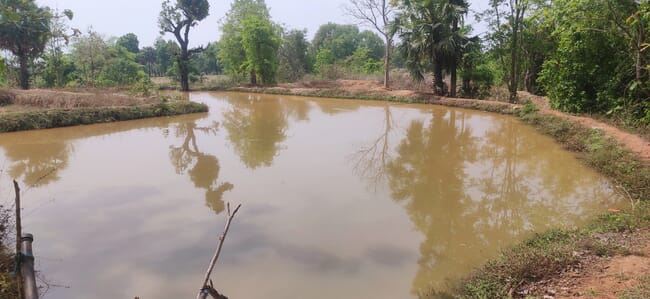
Malakar uses his ponds to hold catfish at different development phases
What sort of production system do you operate?
I farm 14 ponds, on a 3-acre plot, which I excavated at an investment of around Rs 5 lakhs INR ($6,425) last year – including the cost of broodstock and feed.
Six of the ponds are used for holding eggs until they become fry. Five hold fry till they become fingerlings. One is used for keeping broodstock. The remaining two are used for holding fingerlings prior to sale.
What does a normal day on the farm consist of for you?
My daily routine starts at 6 am when I go to the farm and separate the male and female broodstock and put them into two different tanks. Next, I check the water quality of all the ponds. If it has become too hot and then I cool it [by adding river water] because we face severe hot climate conditions here. The water which has become dirty has to be replaced regularly. I feed the fish with commercial feed from the market.
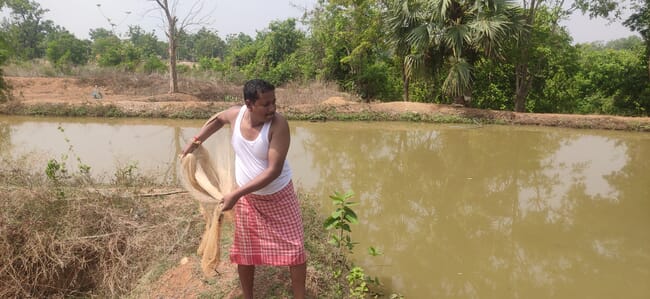
Malakar must monitor the water temperature of his ponds to prevent them from becoming too hot
After lunch I often inject hormones into the male and female broodfish. I collect the eggs and release them into a tank and keep them there for the next 24-48 hours before they are released into the hatchery. I have four workers who help me.
Why did you decide to embark on a career in aquaculture?
I started the farm after watching a video about Asian catfish farming in Bangladesh. I felt that our district had lot of potential for farming indigenous varieties, as several species were becoming scare due to the inadequate supply of juveniles and production facilities.
Asian catfish are in high demand due to their high nutritional value. Eating them is recommended to patients suffering from illness. This, combined with the gap between supply and demand, means they can fetch between Rs 700 INR and Rs 2,000 INR ($9-25) per kg in the market.
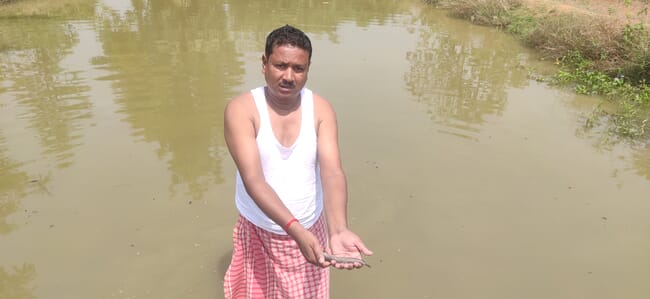
Asian catfish are in high demand due to their nutritional value
I thought that farming the fish could not only be a good livelihood option but the farming would also help in the species’ revival – in the wild the species is on the IUCN Red List and more farmers should help its survival.
I initially bought 104 kg of fish, each of which weighed 150-200 grams, from nearby districts to start farming in June last year. I fed them with commercial diets.
What’s your ultimate ambition in the sector?
This business has lot of potential but a lack of financial resources pose a hurdle for me. I would like to become the most successful Asian catfish farmer in Odisha.
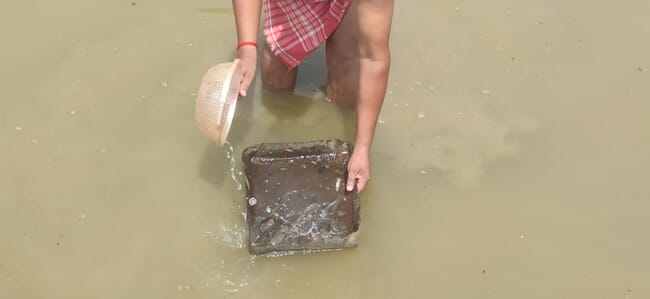
Malakar wants to help restore populations of Asian catfish
What’s your biggest worry at work?
I always pray that my fish should reach harvest without any disease or mortality, otherwise it can cause severe losses, because of my limited financial resources. I suffered a loss of 10 kg of broodstock and failed seven times while trying to breed the fish last year.
What’s your greatest achievement to date?
I knew nothing about fish farming till last year but have achieved encouraging results through sheer hard work, willpower and dedication. I was only educated up to Standard 9 [the age of 15] due to poverty.
Despite facing setbacks, I successfully produced 60,000 fingerlings. I sold all of them and earned Rs 3 lakhs INR ($3,855), which helped me to recover majority of my investment cost. There is a huge demand for fingerlings.
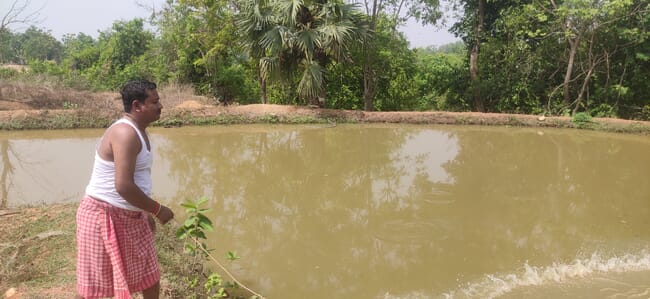
What piece of equipment would you most like to have on your farm?
I need equipment to measure water temperature, oxygen and iron levels. Iron content is quite high in the ground water in this area, which could be the reason I failed seven times – as the eggs came but they didn’t hatch. I only became successful after I changed from using groundwater to river water.
What’s your favourite seafood dish?
I love to eat tiger prawns.


